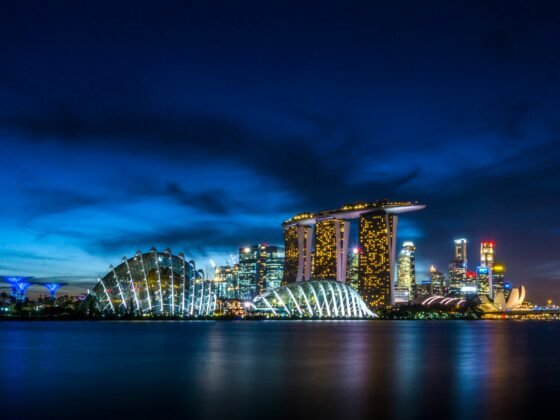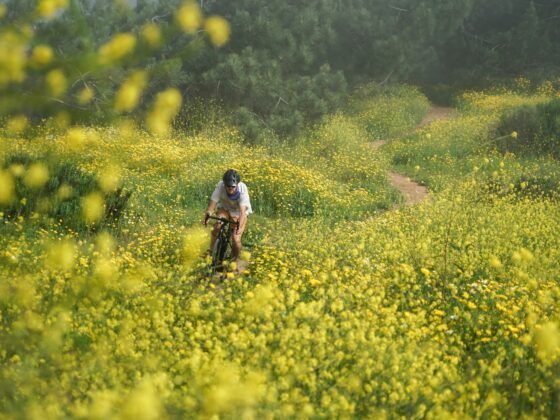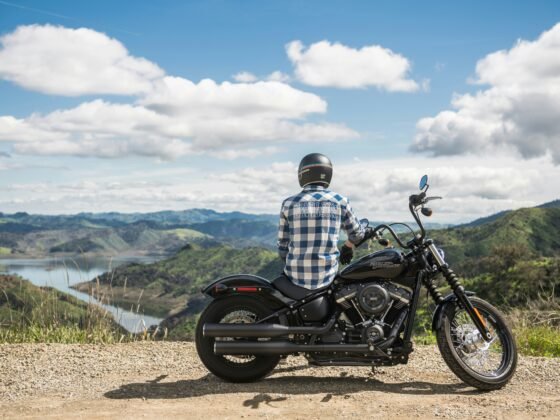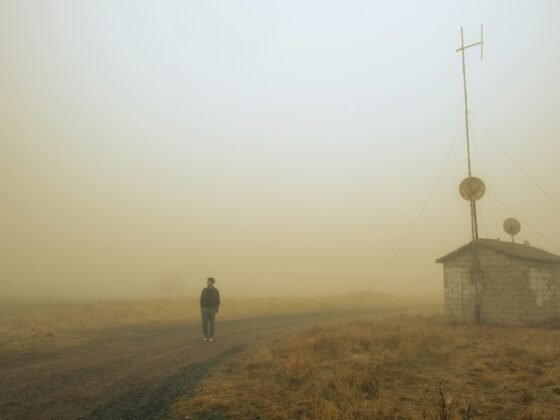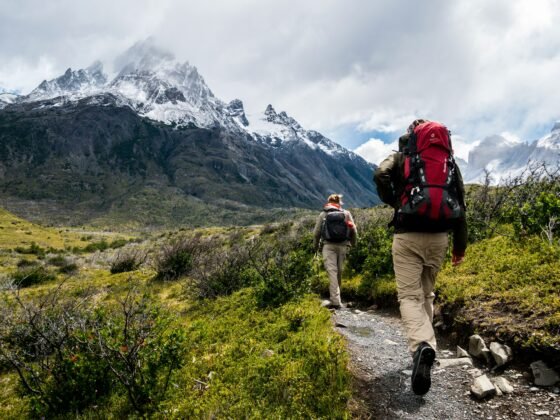In 1989, Borneo was still largely unmapped by tourism. There were few hotels, no smartphones, no Google Maps, and few people outside Southeast Asia could even locate Kalimantan, the Indonesian portion of the island, on a globe.
I was working for a regional newspaper, writing travel features that were published every two weeks in their travel section, and thought Borneo would be an exciting destination to unveil to the people of East Anglia. We – I was traveling with an old University friend Paul – arrived after a turbulent flight over the South China Sea on a small, twin propped airplane from the city of Surabaya in the far east of Java, during which we’d been served a glass of water and a banana.
We landed in Banjarmasin, the humid capital of South Kalimantan, a city criss-crossed by canals and floating markets. It was there that I met Budi, a soft-spoken man in his early thirties who ran the local tourist office, no more than a small counter in one of the many Government buildings. He gave me a look of surprise and excitement when he realised he had a customer.
I had a vague plan: to cross the island from south to east, through jungle and river, village and wilderness. Budi told me to wait and disappeared into a small room. When he returned he handed me a coffee and a basic map. He looked excited. “I’m closing the office,” he announced, “I’m coming with you.”
And just like that, our expedition began. Four days of planning and preparation, buying equipment and supplies, mixed in with sightseeing around the town. We visited the floating market, where small vendors in canoes bought fruit, vegetables and other goods to take off and resell in the vast network small canals and byways that crisscrossed the town. We bought salt and spices to bring as gifts for the people we hoped to meet.
Three Days Up the River
Finally, departure day came, a low sun struggling to burn through a watery sky that promised the rain that fell every afternoon. Taking motorbike taxis, we head down to the quay, somehow balancing ourselves and our bags on the rattling machines as we weaved through the traffic and around large, muddy puddles. The boat was impressive. Its hold was being crammed with freight and baggage, its decks crowded with passengers.
Build on the deck was the passenger accommodation. The lower floor was open, a large area where other passengers were laying claim to areas using rattan mats and their bags. Large wooden panels could be fixed in place as makeshift walls when the monsoon rains started. Stairs led up to an upper story that was an enclosed dormitory crammed with double bunk beds. The roof was only about five feet high, meaning we had to crouch down to get in.
We found our shared bunk and as the journey progressed realised that we were in the best position, midway down the room and near a window. The bunks at the back were near the engine vents, creating heat, noise, vibrations and fumes. Those at the front were near the large TV that played Indonesian films, usually Kung Fu, at full volume all day and most of the night.

This was to be home for three days as we travelled upriver. Casting off a couple of hours late we head upstream at a decent rate, soon leaving behind the large timber mills with rafts of timber tied up on the banks awaiting processing. The banks became a combination of scrub forest and small farms, with the occasional village linked to the outside world by rickety piers jutting wonkily out into the river. When the afternoon monsoon hit we were in our own world, the banks hidden from us by the sheet rain that flattened the surface of the river to a sheet of glass.
Meals were taken at a small canteen at the stern of the boat, a table and two benches built out over the churning river on a small platform. You were allocated a time twice a day and ate in batches of eight, the meal always fish curry and rice. You got one piece of fish each – one morning I got the head, that evening the tail. I went to bed hungry. We drank water that had been scooped from the river in buckets and then filtered and boiled over the kerosene stove and made into a sweet black tea. It was still so full of sediment that you had to drink it through your teeth and then turn to spit out the sludge left in your mouth into the river after every drink.
The toilets were conveniently positioned next to the canteen. Three small cubicles hanging out over the stern, each with a hole cut through the floor and a clear view of the brown river churning past below. Being near the propeller you were in constant danger of backwash from the wake splashing up through the opening. Next to them were the washing facilities, a bench you sat on separated from the river by a rail. You pulled up water in two old paint cans to tip over yourself. You never felt very clean however hard you tried, and silt fell from your hair as it dried in the tropical heat.
The river was our world. Villages came and went like mirages—small clusters of stilt houses, canoes pulled onto muddy banks, and the occasional shout from a child or call to prayer from a wooden mosque. At other times the banks became indistinct, the river disappearing into swamps that blurred the boundary between water and land.
At the larger villages we moored, cargo carried ashore along bouncing gang planks then wooden walkways across the thick mud. Most of it made it safely, with only one crate of bottles and a large bag of salt dropped at all the stops we made. Local boys climbed aboard and we bought bananas from them to supplement our meagre diet. Local traders bobbed around in small canoes, selling cakes for which payment was thrown and the cake delivered spiked on a nail at the end of a long bamboo pole.
Each day, the jungle crept closer, darker, growing in height and density as we moved away from large human habitation. Fish traps and fixed fishing nets lined the bank, local fishermen in canoes waving as they stood to watch us passing. Occasionally we saw tall bamboo poles stuck in the soft bank mud, large nets stretched between them and the occasional flying fox bat hanging entangled in them, a local delicacy we avoided.
On our third day we were travelling through forest, the banks lined with beautiful flowering trees. Monkeys sat beside the water drinking and playing. The few boats we saw were dugout canoes rather than clicker-build or metal hulled. Occasionally we had to pull over to near the bank as a vast raft of logs drifted past, destined for the timber factories of Banjarmasin. Attached to them would be a small boat, its occupants lying relaxed under temporary shades on the logs playing cards as the current did all the work.
At lunchtime we moored up at a small town called Muarateweh, the bustle of people almost overwhelming after 48 hours of a throbbing diesel engine. We disembarked to visit the small market on the riverbank, buying some supplies for the trek and cigarettes to use as gifts. The most popular purchase amongst our fellow passengers was a type of smoked venison from hunted deer, a protected species but for them a welcome change from fish.
That evening, we pulled into a remote village called Luwe Hulu, a name I’d only ever seen on a hand-drawn map before. From this point on, there was no turning back. The village was tiny and sandwiched between an oil compound and a timber yard. We asked for the headman and were led to his house, little more than a timber shack partitioned into three rooms. He was very friendly and insisted we stay with his family and have supper with them, an offer we gratefully accepted as the only other option was the local warung (guesthouse) whose roof comprised mainly of air.

After a refreshing wash in the river (great exfoliation), we returned for tea and he suggested that we visit the oil depot and see if we could hitch a ride with one of their supply vehicles that head regularly to the interior.
When we got there we were met by a manager from New Zealand, somewhat surprised to receive visitors in such a remote spot. An hour later we were sitting on his bungalow veranda watching sunset over the jungle alive with fireflies, drinking ice cold beer in the stifling humidity. A lift was arranged to their third well, a distance of 50 km up country and a big step towards the heart of the Island. We were ready to go.
Into the Jungle
Our journey began at dawn the next morning. We piled into the back of a local Jeep and head out of the village on a narrow track, its brown-red soil standing out garishly from the thick green foliage that surrounded it. Smooth it was not, standing being preferable to sitting when every bump jarred through you. As we dipped through small valleys the road became a quagmire of mud but our Sumatran driver didn’t flinch or slow, taking on the challenge with an enthusiasm and confidence not shared by his passengers. After only a couple of enforced stops when the sand boards were required to extract us from bog-downs we neared Well 3 and were dropped at a small village a couple of kilometres away.
We visited the headman, gave him some cigarettes and in exchange he arranged for two villagers, local Dayak of few words, heavily weathered faces, and extraordinary skill in reading the forest, to guide us to the next village. It was two days walk away, so we paid them for four to cover their return trip. We needed two as they refused to go alone in case something bit them on their way back alone. We carried minimal gear: hammocks, mosquito nets, rice, tinned sardines, and machetes. The trail ahead was faint, barely more than a whisper through the undergrowth.
The jungle was nothing like I had imagined. It was not a sun-dappled paradise but a dense, brooding place. The canopy was so thick it filtered out most light, casting everything in a perpetual green twilight. It was so hot, humid, and wet. The air smelled of earth and decay. Leeches found us within minutes, some falling from trees to bite between our shoulder blades, others creeping into your boots though the lace eyelets. The first you knew of their presence was when you trod on their bodies bloated by your blood, your foot becoming wet and hot as they popped like a baloon inside your boot.

Every step was a contest with mud, roots, and fallen logs. It was a battle to follow the trails as the thick foliage grew out to reclaim the open space. We took turns with the guides using machetes to force out way through, the cuts and scratches on our arms drawing clouds of mosquitoes and flies that it was hard not to inhale.
And yet there was beauty, too. Massive dipterocarp trees rose like cathedrals. We crossed narrow, swaying bridges over streams. As the trail got more remote, rivers were waded and streams crossed on fallen trees. Orchids clung to trunks, and butterflies in electric blues and oranges flitted by. The jungle was alive with sound, insects, frogs, birds, and always the distant crashing of monkeys.

Village to Village
Each day we walked for six to eight hours, stopping only for water and a meal of cold rice. Sometimes, as the moon was near full, we walked into the night. When villages were within reach, we stayed the night either in communal longhouses or in the wooden huts that have superseded them. The longhouses were built on stilts and accessed by log ladders. Families lived in adjoining rooms, sharing a central corridor filled with laughter, wood smoke, and storytelling. We would leave our small offerings of salt and spices by the village totem pole, valuable gifts that were immediately claimed by the village elders.
The hospitality was extraordinary. We arrived unannounced, muddy and exhausted, and were offered food, space to sleep, and always a smile. Meals were simple, wild greens, river fish, rice, and sometimes a chicken if one could be spared. Salt and spice were luxuries we were happy to offer as a small contribution to the meals. We always offered money but it was never accepted.

Facilities varied village to village. If the village was near a river then the communal toilet always overhung it, slightly downstream, a shoal of fish alert and waiting for the next meal to drop in. Occasionally there was a local spring – an utter joy in the stifling humidity to pour crystal clear, icy water over your head.
Sometimes there was the village cemetery nearby, wooden coffins covered with carvings of hornbills and other exotic birds and animals, vividly painted and positioned high in trees. It made for an eerie but evocative atmosphere surrounded in the vibrant life of the jungle.
In the evenings we sat in the headman’s house eating with him and the other villagers, often watched by large gatherings of women and children. Some of the small children were frightened of us and our pale skin, their mothers bringing them over to touch our white and hairy arms and causing great hilarity amongst the other villagers. One evening an old Dayak hunter climbed up into the longhouse carrying a dead monkey and his beautiful, ironwood blowpipe. He carefully opened a small wooden case to reveal poison-tipped darts with hornbill feather flights.
In only one village did we encounter a problem and that was not due to a lack of hospitality but a fear for our wellbeing. The village had a young woman who was ill and it was believed she had been cursed by black magic. A structure that looked like a bed was built before the house, a ratan cable running from this to the house itself, as a warning to people not to go in and as a conduit for the evil magic to leave by. That evening we were not allowed outside by our hosts in case the curse jumped to us, even receiving an escort to the toilet in the jungle.
When the distance between villages was too great, we used makeshift wooden platforms in the forest, repairing them with the help of our guides. The first night we rigged a shelter, using a tarpaulin as a roof to keep us dry from the rain and dripping trees. As we lay to sleep in our clothes, you heard the drone of mosquitos and watched the surrounding jungle lit by the occasional flash of distant lightening and a myriad of fireflies. The roof worked until a tropical downpour at 2 am brought one corner down and soaked us all, the only consolation being the opportunity to fill water bottles with fresh drinking water.

Encounters with the Wild
Despite the omnipresent jungle soundscape, wildlife proved elusive. We saw the tracks of a clouded leopard, some claw marks on tree trunks, fruit scattered on the ground, droppings on the path but the animals stayed hidden, apart from a couple of fleeting glimpses of proboscis monkeys and the ground rats that ran over us when sleeping in our jungle shelters.
Snakes were our biggest concern. Wading rivers, we saw them swimming in the waters. A small, green one slithered between my legs as I walked along a narrow trail that was traversing a steep riverbank. Luckily it was heading downhill and didn’t pause. Every morning, we checked our boots in case one had curled up in their warm, wet interiors during the cooler night. It was only ever spiders that were shaken out and the occasional giant centipede.
In several villages we saw young orangutans in cages. They were silent, resigned. These were wild animals, captured, likely after their mothers were killed, and now destined for the illegal pet trade and providing cash to villagers with no other means of earning it, albeit a fraction of what the traders would receive when they sold them on in Singapore and beyond.. The cruelty was unspoken but clear. One orangutan clutched the wooden bars as we walked by, and for a moment, its eyes tracked mine. I still occasionally think about the life it had.
It was a haunting reminder of what lay beneath the canopy’s green skin: loss, desperation, and the creeping edge of deforestation and poaching. Even in the thickest jungle you would suddenly emerge into a patch of cleared land for slash and burn farming or find a long deserted and eroded forestry track. In the middle of wilderness, we were still destroying so much.
Spirit Ceremony
One evening, after arriving in a remote village deep in the jungle, we learned a man had died. The village was in mourning. A shamanic ceremony would be held that night to release the man’s spirit from the earth and guide it to the spirit world. We were invited to stay.

At dusk, people gathered in a circle near the longhouse. A fire was lit. Inside the shaman, an elder with tattooed arms and a feathered headdress, moved between the living and the dead, chanting, rattling bones, and burning fragrant herbs. The air was thick with smoke and anticipation. I watched as family members wept and then danced, their grief transformed into rhythm and memory, and our enthusiasm and insight into the ceremony undoubtedly enhanced by the herbal plants being burnt on a small lamp before a grass alter.
It was the most powerful cultural moment of the journey, a reminder that the forest was not only a place of nature, but of spirit, belief, and deep-rooted connection.
Downstream
After nearly two weeks of trekking, our supplies were finished and our clothes rotten from the constant humidity, rain and sweating. We were scarred from infected leech bites that constantly seeped blood. I could see the ground through an infected hole in my right foot.
We’d been staying in a small village perched on on the banks of a narrow stream, just about navigable. We had crossed over into a new watershed – this was the start of the Talen River and its waters flowed, through several river guises, to the sea on the eastern seaboard of Borneo.

A small dugout canoe was waiting next morning and began our descent to Samarinda, often having to pull the canoe through shallows and thick, hanging vegetation. The stream soon grew to a small river, flowing faster as the volume of water grew. The canoe became a larger boat with a motor and then, midway down the Telen River, we stepped onto a riverboat. The fish stew, heads or tails, were eaten and savoured. Being in the light once more, no longer hemmed in by trees in a perpetual darkness, was a wonder. The cooling breeze as the boat seemingly flew downriver felt a luxury as rich as any I’ve ever experienced.
The river widened until you could hardly see the far bank. Signs of industry began to appear with logs floating in rafts, smoke rising from distant hills, and finally, the silhouette of Samarinda’s buildings against a low, grey sky. The transition was startling. We had crossed Borneo.
Looking Back
My trek across Borneo was much more than just a physical challenge. It was a journey through time, a rare glimpse of a world still tethered to its past. The Dayak communities, the thick jungle, the hidden wildlife, the spiritual rituals all existed in a delicate balance, one that even then felt precarious.
Thirty-five years on, I often wonder what became of those villages. Have the logging roads reached them? Do the longhouses still stand? What of the caged orangutans, did they ever see the forest again?
And what of Budi, my companion and translator, who closed his office to chase an adventure into the unknown? His kindness, patience, and humour carried us through the darkest days of the trek. Without him, we would have got nowhere.
The heart of Borneo beats quietly, persistently. It is a place that few see, but those who do are privileged to do so and changed by it forever.

I travelled to Borneo in 1989, armed with a terrible wardrobe and an old Minolta camera that took slides. Thanks to these and the diaries I kept, I still remember this journey as an early highlight in my travelling life.


